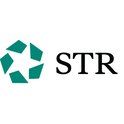STR reports U.S. performance for October
HENDERSONVILLE, Tennessee | The U.S. hotel industry posted declines in all three key performance measurements during October, including the first year-over-year decline in average daily rate in more than five years, according to data from STR.
In year-over-year measurements, the industry’s ADR in October fell 0.5 percent from October 2007 to close the month at US$107.60—down from US$108.19 in October 2007. The decline broke a streak of 63 consecutive months of positive year-over-year monthly ADR numbers—the last monthly ADR decline was a 0.8-percent drop in June 2003.
The U.S. hotel industry’s year-over-year revenue per available room dropped 7.0 percent in October and finished the month at US$66.85—down from US$71.92 a year earlier. Occupancy also declined in October, falling 6.5 percent to 62.1 percent (from 66.5 percent in 2007).
Each of the seven chain-scale segments as defined by STR posted year-over-year losses in occupancy and RevPAR. Three of them had increases in ADR—the Midscale with Food and Beverage segment’s ADR was up 1.1 percent, the Midscale without Food and Beverage segment’s ADR increased 1.8 percent and the Economy segment’s average rate rose 0.3 percent.
Year-to-date (through October) results are mixed for the industry. Through the first 10 months of 2008, the industry’s ADR is up 3.2 percent to US$107.44 (from US$104.09 for the first 10 months of 2007). Meanwhile RevPAR is off 0.3 percent to US$67.51 (from US$67.69 in 2007) and occupancy declined 3.4 percent to 62.8 percent (from 65.0 percent in 2007).
Top 25 markets with the most noteworthy year-to-date October performance include:
- Largest RevPAR gains: New Orleans, Louisiana (+13.2 percent); Houston, Texas (+11.2 percent), San Francisco/San Mateo, California (+7.8 percent).
- Largest RevPAR declines: Norfolk-Virginia Beach, Virginia (-7.9 percent); Phoenix, Arizona (-6.2 percent); and Boston, Massachusetts (-4.6 percent).
- Largest ADR gains (all Top 25 markets posted YTD rate increases): Houston, Texas (+9.8 percent); Denver, Colorado (+7.2 percent); and San Francisco-San Mateo, California (+6.4 percent).
- Largest occupancy increases (only three Top 25 markets posted YTD occupancy increases): New Orleans, Louisiana (+11.2 percent); Houston, Texas and San Francisco-San Mateo, California (+1.3 percent each).
- Largest occupancy declines: Phoenix, Arizona (-10.2 percent); Norfolk-Virginia Beach, Virginia (-8.9 percent) and Nashville, Tennessee (-7.1 percent).
“Houston continues to outperform the rest of the top 25 because of the displacement of Hurricane Ike and the relative strength of the oil industry,” Freitag said. “And New Orleans appears to have gotten back on the schedule for larger groups, as its RevPAR and occupancy indicates. However, with a year-to-date ADR increase of only 1.8 percent through November, it is clear that its pricing power hasn’t experienced the same robust growth.”
About STR & STR Global: or more than 20 years, Smith Travel Research has been the recognized leader for lodging industry benchmarking and research. Smith Travel Research and STR Global offer monthly, weekly, and daily STAR benchmarking reports to more than 36,000 hotel clients, representing nearly 5 million rooms worldwide. STR is headquartered in Hendersonville, Tennessee, and STR Global is based in London. For more information, visit .
Jeff Higley (STR)
VP, Digital Media & Communications
+1 (615) 824-8664 ext. 3318
STR
